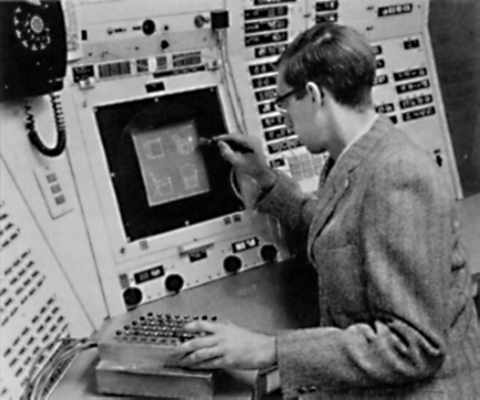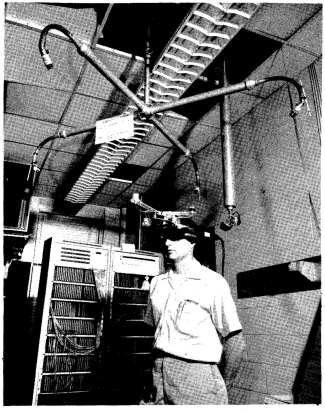| Ivan Sutherland - Father of Computer Graphics |
| Written by Historian | ||||
Page 2 of 3
SketchpadThe atmosphere of academic freedom at MIT allowed some students to start to think of more exciting lines of research. Graduate students began to play Spacewar on the TX-2. This was probably the first graphics-based game. Two space ships on opposite sides of a sun fired missiles at each other. The sun had gravity and there were lots of extra complications to be mastered before you could blow your enemy’s ship up. Sutherland was impressed and he decided that the TX-2 should be a good machine with which to implement a realtime drawing program. (SpaceWar is also responsible for the creation of the Unix operating system. Ken Thompson salvaged a PDP-1 and started writing Unix just with the aim of playing SpaceWar!) Sutherland's PhD thesis was entitled “Sketchpad: A Man-Machine Graphical Communication System”. As a graduate student the only time he could get the TX-2 to himself was between 3.00 and 5.00 a.m. and so this is yet again another tale of late night programming! Sketchpad may look obvious and under-powered as a drawing program from today’s perspective but nothing like it had existed before. Sutherland introduced many of the graphical conventions we now take for granted. It used a scale of 2000:1, making the virtual drawing space huge, and pioneered techniques such as “rubberbanding”, zooming and object-oriented drawing. A light pen provided co-ordinates for drawing commands entered using the keyboard. Previously drawn primitive objects could be recalled and rotated, scaled and moved. Finished drawings could be stored on magnetic tape and re-edited at a later date. Sketchpad with Sutherland at the controls The nature of the interaction between the TX2 and its user inspired many a computer scientist to take up computer graphics and to dream of the day when all computers would be capable of working in this way. Sutherland’s thesis was completed in 1963 and it included a short film of him sitting at the TX2 console drawing a bolt. Computer graphics and Computer Aided Design in particular had been invented in one step. In 1963 Sutherland found himself drafted into the army and assigned to the National Security Agency – because he knew about computers. He realized that the government’s involvement in computers was huge. The NSA measured its computer power in “acres”. In 1964 he was transferred to the Advanced Research Projects Agency, ARPA, who were responsible for many of the computing projects, including the Internet. At the age of 26 First Lieutenant Ivan E. Sutherland was given control of $15 million dollars a year, an office, a secretary and told to “go sponsor computer research”. Over the following two years he commissioned and managed a range of computer projects that included AI and timesharing. He also met Dave Evans, then at the Virtual RealityIn 1966 Sutherland, while an Associate Professor at Harvard, took another huge step towards the future of computing – one that we still haven’t completed today. He and his graduate student Bob Sproull started work on a “Remote Reality” vision system for Bell Helicopter and turned it into a “Virtual Reality” system. They replaced the TV camera that fed the primitive “head-mounted display” with a computer connection. worn by the user was so heavy it had to be suspended from the ceiling, and the graphics comprising the virtual environment were simple wireframe model rooms. From "A head-mounted three dimensional display" by Ivan E. Sutherland presented at Fall Joint Computer Conference, 1968. The formidable appearance of the device inspired its name, The Sword of Damocles. Sutherland may not have invented the term “Virtual Reality” but he was certainly one of the first to implement it. <ASIN:0070605041> <ASIN:1852339020> <ASIN:1558603875> <ASIN:0122861663> |
||||
| Last Updated ( Thursday, 28 February 2019 ) |


